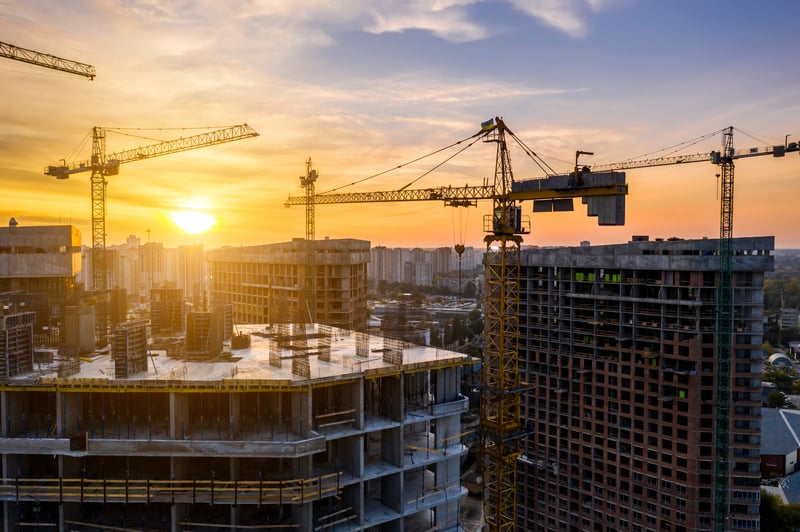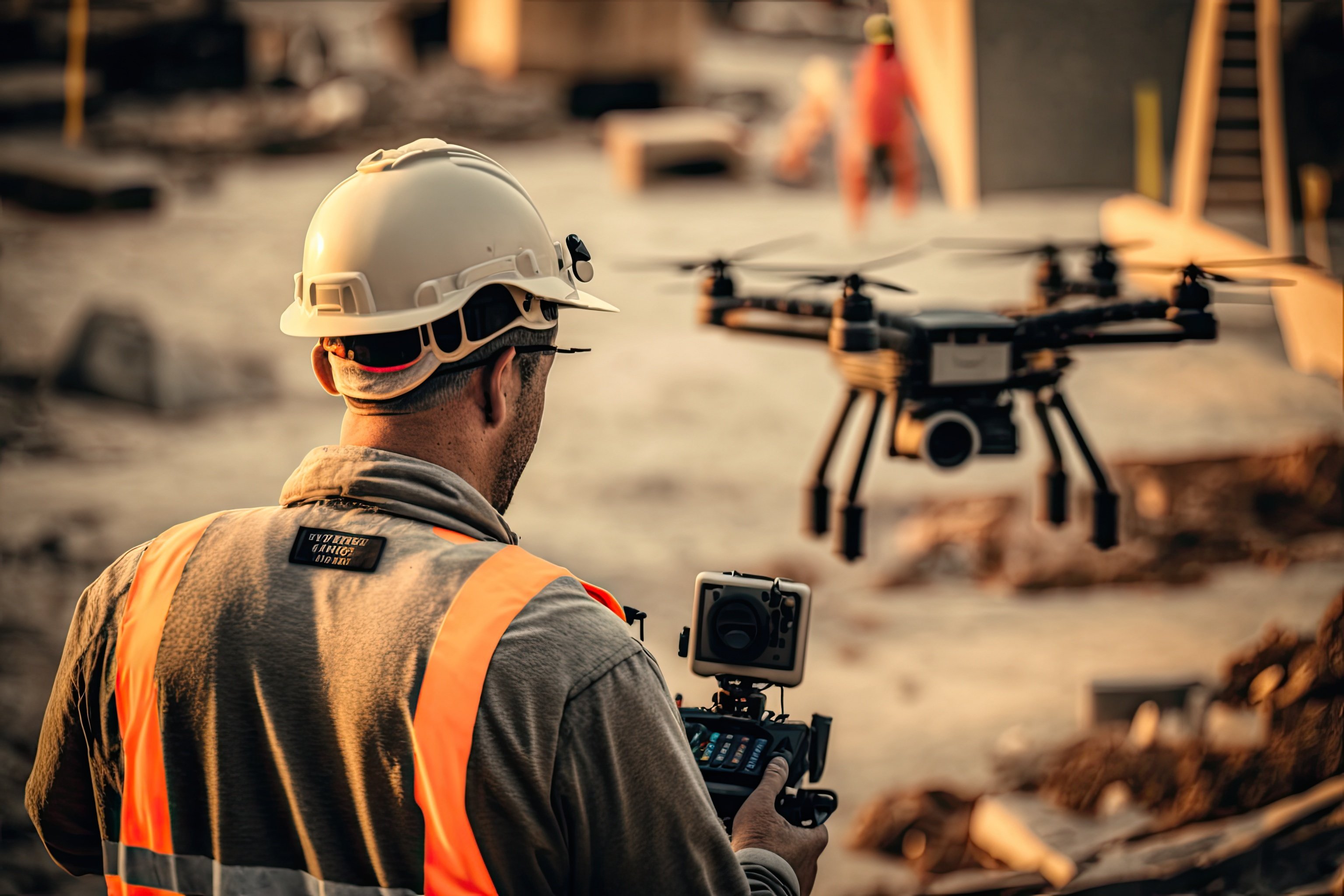With large-scale projects ranging from residential buildings to infrastructure developments, the need for effective construction progress monitoring has never been more crucial. Timely and accurate monitoring of construction progress is essential for ensuring project success, staying within budget constraints, and delivering high-quality results.
In this article, we’ll explore the significance of construction progress monitoring, the challenges associated with it, and the innovative technologies and best practices that are transforming the way we track and manage construction projects.

What is Construction Progress Monitoring?
Construction progress monitoring, otherwise known as construction progress tracking is like the roadmap for a construction project. It's the continuous check-in and evaluation process that keeps everyone on the same page, making sure the project is heading in the right direction.
Good progress monitoring gives you the answers you need to know how your project is going – are we on schedule, within budget, and meeting quality standards? The aim is to provide a clear picture of where the project stands at any given moment, helping decision-makers spot potential issues, allocate resources wisely, and keep things on track for a successful and timely finish.
In simpler terms, construction progress monitoring is all about using smart tools and methods to make sure construction projects run smoothly from start to finish. It's the driving force that ensures everyone involved knows what's happening, when it's happening, and how well it's happening, all without the headaches of guesswork or unnecessary surprises.
Why is Construction Progress Monitoring Important?
Construction projects involve numerous tasks, stakeholders, and resources. Properly monitoring progress is essential for several reasons:
1. It helps you precisely manage your project for greater controlConstruction progress monitoring provides project managers with real-time insights into the status of various activities. This information is vital for effective decision-making, resource allocation, and risk management. It enables project managers to identify potential issues early and take corrective actions to keep the project on track.
2. It helps you control your costs
Overruns in construction projects can have significant financial implications. Construction progress monitoring helps in controlling costs by identifying areas where resources are being underutilised or where unexpected expenses are occurring. This allows for better budget forecasting and financial planning.
3. It helps you stick to the schedule
Timely completion of construction projects is a key factor in their success. Construction progress monitoring helps you to stick to the project timeline as closely as possible. It allows project managers to identify delays, assess their impact, and implement strategies to get the project back on schedule.
4. It helps uphold quality
Monitoring construction progress goes beyond tracking timelines and budgets; it also involves ensuring the quality of work. Regular inspections and monitoring help identify any deviations from project specifications, allowing for corrective measures to be taken before issues escalate.
5. It provides the insights your stakeholders need
Construction projects involve multiple stakeholders, including clients, contractors, suppliers, and regulatory authorities. Clear and transparent communication is essential for building trust and ensuring everyone is on the same page. Progress monitoring provides the data needed for effective communication and collaboration among stakeholders – it also helps you to mitigate against risks.

Challenges in Construction Progress Monitoring
Effective construction progress monitoring can have its challenges. Some common roadblocks that can interrupt progress tracking include:
Data Accuracy and Timeliness:
Gathering accurate and timely data is pivotal for effective progress tracking. However, the manual tasks of collecting, updating, and validating data can be time-intensive. The pitfalls of human error in manual entry and the potential delays in reporting pose challenges that directly impact decision-making.
Visibility Across the Project:
With multiple teams working on different aspects of a construction project simultaneously, with different methods of reporting, it can be difficult to keep track of everything happening. Because of this, achieving visibility across the entire project becomes a challenge, especially when reliant on traditional methods involving paperwork and spreadsheets for data collection and reporting.
Integration of Technologies:
Construction sites embrace a spectrum of technologies, from heavy machinery to specialised construction progress tracking software. The challenge lies in harmonising these diverse technologies to present a unified view of the project's progress. The lack of integration can lead to data silos, creating obstacles in the overall monitoring process.
Unforeseen Events:
Construction projects exist in a world where unforeseen events like weather disruptions, supply chain issues, or regulatory changes are inevitable. These events, beyond our control, can impact timelines and budgets. As a result, having practices in place to assess and adapt to these unforeseen challenges becomes essential.

Implementing Effective Construction Progress Monitoring
When it comes to carrying out effective construction progress monitoring, there are a few things you’ll want to consider...
1. Ditch the spreadsheets and manual methods
Despite Excel trackers being the most common way to track progress, relying on them is not the most effective way of understanding how your project is progressing. Here’s why:
- Excel trackers cause duplication of work: How many times have you been on-site, and made notes only to have to re-enter this data when you’re back in the office?
- Excel trackers are disconnected: Spreadsheets are static, disconnected from the actual construction site and almost impossible to connect to your site in real-time.
- Excel trackers prevent true clarity: The lack of visualisation and the inability to add supporting documents or photos makes it hard to understand the current work status.
- Excel trackers hurt productivity: Excel's single-user nature prevents true collaboration and makes it difficult to share and update information in real-time.
Instead, implement a construction progress monitoring software solution to help you keep track of your project. We go into more detail about this later, in the meantime, to get a free construction progress monitoring tracker, try Track Free here.
2. Define Clear Objectives
Before diving into your construction project, take a moment to craft a detailed project plan that really understands the nitty-gritty of what you're about to embark on. It's not just about the big picture; it's about the little details that make the whole thing come together.
Start by thinking about the end result – what are the tangible outcomes you're aiming for? From preparing the site to finishing up the interior, every step should be listed out. This list becomes the backbone of your project plan.
Consider the flow of people and expertise throughout the project. Who comes in when, and in what order? Ensuring a smooth transition from one stage to the next is key.
Don't forget to mark the important moments – pouring the foundation, putting on the roof, and the final inspections. These are like checkpoints, helping you keep tabs on progress and staying on track.
Creating this kind of project plan isn't just about ticking boxes. It's about giving your construction team a roadmap. Everyone should know their role, what they're responsible for, and how it all ties into the bigger project goals. This will help make sure everything falls into place.
3. Carry out on-site to get real-time data
In most cases, progress tracking is done reactively, or in hindsight - you spend the day on-site taking notes, then later go back to the office to record updates into your Excel tracker.
Many don’t realise, but this is the hard way.
With a lack of real-time data being fed into your tracker, decision-making is slow and issues can easily be missed, leading to unnecessary disruptions.
In fact, on a typical residential project with 500 apartment units, teams spend 1,500 hours per month on progress and task management.
Carrying out construction progress monitoring ‘in the moment’ while on-site is a more proactive approach that allows you to gain true visibility into your project through real-time data.
4. Connect your supply chain
Everything on a project is connected, so connecting all the moving parts of your project is essential to understanding progress.
Say farewell to managing numerous spreadsheets and instead, integrate all facets of time, quality, and cost to establish a singular, reliable source of truth. This approach not only facilitates seamless collaboration among your teams but also enhances overall efficiency.
On top of this, you should aim to connect your wider construction supply chain – from your stakeholders to your subcontractors and suppliers, having a way to communicate and share progress is non-negotiable if you want to improve progress monitoring.

Innovative Technologies in Construction Progress Monitoring
To overcome the challenges associated with construction progress monitoring, the industry has witnessed the integration of innovative technologies. Many of these technologies are revolutionising the way construction projects are planned, executed, and monitored:
1. Building Information Modelling (BIM):
BIM is a digital representation of the physical and functional characteristics of a building or infrastructure. It allows for the creation of a 3D model that encompasses every aspect of the construction project. BIM provides real-time updates on the project's status, enabling stakeholders to visualise progress and identify potential issues before they escalate.
2. Drones and Aerial Imaging:
Drones equipped with high-resolution cameras are being increasingly used to monitor construction sites. They provide a bird's-eye view of the entire project, allowing for comprehensive progress tracking. Aerial imaging helps in surveying large areas quickly, assessing topography, and identifying potential safety hazards.
3. IoT Sensors:
Internet of Things (IoT) sensors can be embedded in construction equipment, machinery, and even building materials. These sensors collect data on various parameters, such as temperature, humidity, and equipment utilisation. This real-time data is transmitted to a central system, providing project managers with insights into the performance of both human and machine resources.
4. Mobile Construction Management Apps:
Mobile apps designed for construction progress monitoring enable on-site teams to report progress, issues, and updates in real-time. These apps facilitate better communication and collaboration among team members, reducing the reliance on manual data entry and paperwork.
The Sablono Track Free app is a connected, real-time tracker that’s connected directly to your construction site - and it’s completely free.
With Track Free you can:
- Replace static Excel trackers
- Save time by reporting from the site
- Easily understand progress data
- Invite your team to 2X productivity
Try Track Free here.
5. Augmented Reality (AR) and Virtual Reality (VR):
AR and VR technologies are being used to enhance the planning and monitoring of construction projects. AR overlays digital information onto the real-world environment, providing on-site workers with contextual information. VR, on the other hand, allows stakeholders to immerse themselves in a virtual representation of the construction project, facilitating better decision-making and collaboration.
6. Visual Progress Tools:
Visual progress monitoring tools utilise on-site cameras that capture 360° photos. Specifically, 3D cameras document trade activities as they finish their work. At the close of each day, this captured footage is uploaded and synced with the project plan. Artificial intelligence (AI) then analyses these images to generate valuable insights around the project's progress.
Case Studies: Successful Implementation of Construction Progress Monitoring
The Shard, London:
The Shard, one of London's iconic skyscrapers, utilised BIM extensively for construction progress monitoring. The 3D model allowed project managers to visualise the entire construction process, identify clashes in design early on, and optimise construction sequences for efficiency
300 Manor Road
The Morgan Sindall Construction 300 Manor Road team wanted to gain a comprehensive real-time understanding of site performance and they adopted Sablono to help them achieve this.
The team used the Sablono app to report progress updates on the site in the moment with any updates made being automatically synced to the Sablono desktop tracker.
Managers were able to track tens of thousands of activities across the project team, subcontractors and supply chain in real-time down to the most granular detail. They were also able to filter their view by area, status, deliverable and team to get a clear understanding of where their project was at.
The result?
- 6000+ hours saved on documentation
- 1000+ hours saved on inspection times
- Weekly meetings halved, saving 3000+ hours
{Note: To learn how Sablono can help you achieve similar results, click this link: Sablono's construction progress monitoring software, or schedule a call with our team to get a personalised demo.}
Construction Progress Monitoring: The Easy Way
Imagine if there was an easier way to track all the moving parts of your project or package…
Sablono Track Free brings a connected, real-time tracker that’s connected directly to the construction site.
Oh, and did we mention that it’s free? Try Track Free




.png?width=640&height=360&name=Sablono%20-%20London%20Build%20-%20640x360%20(1).png)
